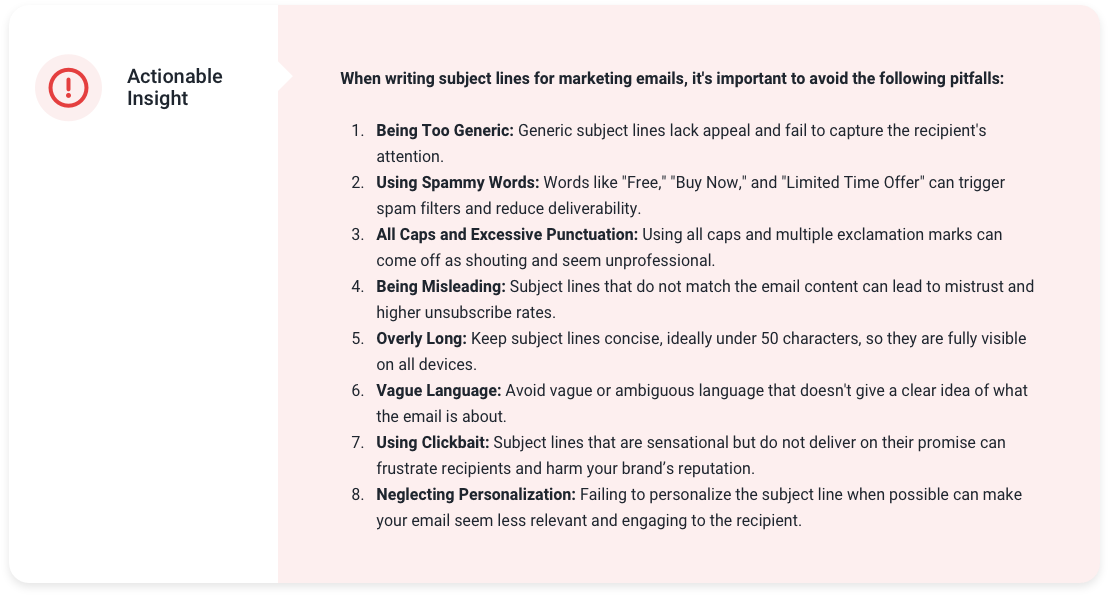Introduction
Discover the power of performance marketing – the strategic and effective marketing approach that has revolutionized the digital landscape. With insights into its core principles, businesses can create targeted campaigns, make informed decisions, and maximize ROI.
Our comprehensive performance marketing guide covers basics, benefits, channels, measurements, tools, best practices, emerging trends, case studies, and the industry’s future. Use this guide to leverage performance marketing and fuel your business growth successfully.
Part 1: Performance Marketing Basics and Key Terminology
What is Performance Marketing?
Performance marketing is a data-driven digital marketing strategy where advertisers pay for specific actions instead of just impressions. Targeting clicks, leads, or sales guarantees effective results. Not only does it help with cost management, but it also provides a significant boost to ROI.
Key Terminology
- Affiliate: A partner who promotes products or services on behalf of an advertiser in exchange for a commission.
- Conversion: A completed action, such as a purchase, lead, or sign-up, that generates revenue for the advertiser.
- Cost Per Action (CPA): The price an advertiser pays for each completed action.
- Cost Per Click (CPC): The price an advertiser pays for each click on their advertisement.
- Cost Per Lead (CPL): The price an advertiser pays for each qualified lead generated.
- Cost Per Sale (CPS): The price an advertiser pays for each completed sale.
Part 2: Benefits of Performance Marketing
Performance marketing offers numerous advantages to businesses, such as assessing campaign effectiveness and optimizing it accordingly, accurately targeting specific audience groups, and delivering exceptional ROI compared to other marketing approaches. Additionally, it equips businesses with real-time data and insights, enabling them to make informed decisions and adjust strategies. By capitalizing on the benefits of performance marketing, companies can stimulate growth and increase revenue more effectively and efficiently.
- Cost-efficiency: Advertisers are only charged for completed actions, simplifying budget management and ROI tracking.
- Quantifiable outcomes: The performance-oriented method allows companies to monitor and evaluate data, making campaign adjustments and result optimization easier.
- Extensive reach: Performance marketing initiatives can be implemented across multiple channels like social media, email, and search engines to connect with various audiences.
- Minimal risk: Due to the payment for actual results, experimenting with various strategies and tactics involves lower risk.
Part 3: Performance Marketing Channels
To maximize the effectiveness of performance marketing, businesses should explore a variety of channels that cater to a broad audience and optimize revenue potential. These channels include social media, email, and pay-per-click campaigns.

Utilizing multiple channels enables marketers to witness improved results in heightened conversion rates and ROI. Nonetheless, it is crucial to tailor each channel according to the target audience and maintain consistent messaging across all platforms for optimal impact.
- Affiliate marketing: Partnering with affiliates who promote products or services on behalf of advertisers in exchange for commissions.
- Email marketing: Sending targeted email campaigns to potential customers who have opted to receive promotional content.
- Social media advertising: Promoting products or services through paid advertisements on platforms like Facebook, Instagram, and Twitter.
- Search engine marketing (SEM): Using paid search advertising, like Google Ads, to increase visibility on search engine results pages (SERPs).
- Influencer marketing: Collaborating with influencers to promote products or services to their followers.
- Native advertising: Using content that blends seamlessly into the format and content of the platform where it is displayed, often without the user being aware of the paid nature of the ad.
- Omnichannel marketing: Creating a seamless experience across multiple channels and devices and engaging with customers through multiple touchpoints to build loyalty.
- Display advertising: Using online ad formats like banners and video to display ads on websites, apps, and other digital properties.
Part 4: Measuring Performance Marketing Success

Monitoring performance marketing campaigns is vital to success, and businesses should track key performance indicators (KPIs), including:
- Conversion rate: The percentage of users who complete a desired action after engaging with an advertisement.
- Click-through rate (CTR): The percentage of users who click on an advertisement and are redirected to the advertiser’s website.
- Cost per action (CPA): The total cost of generating a specific action, such as a lead or sale.
- Return on investment (ROI): The net profit a marketing campaign generates, expressed as a percentage of the total cost.
- Average order value (AOV): The average amount spent by customers when they complete a purchase.
Part 5: Tools and Technologies for Performance Marketing
Businesses can leverage cutting-edge automated tools and technologies to boost the effectiveness of performance marketing campaigns. These can include advanced AI-powered analytics engines, software for optimizing conversion rates (CRO), heat mapping, audience insights, and more.
By tapping into these technologies, businesses can optimize ad targeting, split testing, optimization, and attribution. Optimizing can lead to more efficient use of marketing spend, higher conversion rates, and greater customer engagement.
Investing in the latest marketing technologies is essential for businesses seeking to stay competitive in today’s fast-paced digital landscape. Some examples of these include:
- Data collection and analysis: Use platforms like Google Analytics or Adobe Analytics to gather and analyze user behavior, conversions, and campaign performance data.
- Affiliate tracking and management: Employ affiliate tracking software, such as Post Affiliate Pro or PartnerStack, to monitor and manage affiliate relationships, track conversions, and automate commission payments.
- Email remarketing: Leverage email marketing platforms like Mailchimp or ActiveCampaign to design, send, and analyze targeted email campaigns.
- Social media advertising: Utilize tools like Facebook Ads Manager or Sprout Social to create, manage, and analyze social media ad campaigns.
- Search engine marketing: Harness platforms like Google Ads or Microsoft Advertising to manage and optimize paid search advertising efforts.
- Content marketing: Use content management systems (CMS) like WordPress or HubSpot to create, publish, and manage digital content.
Part 6: Compliance and Best Practices

Following some commonly accepted industry best practices help you maintain your brand’s integrity and your audience’s trust. In addition, it will help you avoid paying potentially significant fines or penalties from lawsuits or regulators. These best practices include:
- Transparency: Clearly disclose affiliate relationships and any commissions or incentives received from promoting products or services.
- Data Privacy: Comply with data privacy regulations like GDPR and CCPA, demonstrating responsible and secure user data management.
- Ethical Marketing: Avoid deceptive or misleading marketing tactics and promote products or services aligned with your values and audience expectations.
- Fraud Prevention: Implement best practices for identifying and preventing fraudulent campaign activities to protect your business reputation.
- Platform Guidelines Adherence: Follow advertising guidelines and policies set by platforms like Google Ads, Facebook, or affiliate networks to maintain positive relationships and prevent potential issues.
By adhering to these best practices, you can remain a trusted source for your audience and avoid being penalized by ad platforms.
Part 7: Staying Ahead in the Performance Marketing Industry
To maintain a competitive edge in performance marketing, one should adopt a proactive approach by exploring various strategies. The performance marketing industry is ever-changing, and complacency is a significant threat to success. A few ways to stay on top of the game in the performance marketing industry include:
- Commit to continuous learning: Stay informed about industry developments by participating in webinars, courses, industry blogs, and networking events.
- Embrace experimentation: Test various strategies, tactics, and channels to determine what works best for your business and refine your efforts accordingly.
- Maximize technology utilization: Use cutting-edge tools and platforms designed for performance marketing to streamline efforts, automate tasks, and enhance tracking and reporting accuracy.
- Forge partnerships with seasoned professionals: Collaborate with experienced affiliates, marketing agencies, or consultants to leverage their expertise and insights, helping navigate the complexities of performance marketing.
Part 8: Case Studies of Successful Performance Marketing Campaigns
Case Study : Mutual of Omaha
Case Study: The Lead Group
Part 9: The Future of Performance Marketing
Artificial Intelligence and Machine Learning
Integrating artificial intelligence (AI) and machine learning into performance marketing has already started showing its impact on various aspects of the industry. For example, AI-powered chatbots are now used to engage with website visitors and guide them through the sales funnel, leading to higher conversion rates. Machine learning algorithms can also analyze vast amounts of data to predict user behavior and preferences, allowing advertisers to target users with personalized offers and messaging.
One specific example is the use of AI by Google Ads to optimize bidding strategies. With its Smart Bidding feature, Google Ads leverages machine learning to automatically adjust bids in real-time, maximizing conversion rates or return on ad spend (ROAS) based on the advertiser’s goals.
Privacy-First Marketing
As data privacy concerns grow, privacy-first marketing strategies are becoming increasingly important. An example of such an approach is Apple’s App Tracking Transparency (ATT) framework, which requires app developers to obtain explicit user consent before tracking their activities across different apps and websites. As a result, advertisers have shifted their focus from third-party data towards first-party data, such as information collected directly from users through sign-ups, surveys, or in-app interactions.
A specific case of privacy-first marketing is Procter & Gamble’s (P&G) recent move to focus on contextual targeting. P&G began investing more in contextual advertising, which involves placing ads based on the content of a webpage rather than user behavior, to reach its target audience without relying on third-party cookies.
Integration of Virtual Reality (VR) and Augmented Reality (AR)

Integrating VR and AR technologies into performance marketing presents unique opportunities for advertisers to create immersive experiences that captivate users.
For example, IKEA uses AR technology to allow customers to virtually place furniture items in their homes using their smartphones, making it easier for users to visualize how products would look and fit in their living spaces.
Another example is the use of VR in marketing campaigns by automobile manufacturers like Audi. Audi created a virtual reality showroom that allowed potential customers to explore and customize vehicle models in a highly interactive and immersive environment, driving user engagement and increasing the likelihood of conversion.
Blockchain Technology and Performance Marketing
Blockchain technology holds great promise for performance marketing by offering increased transparency, security, and efficiency in tracking and verifying transactions.
For instance, the Basic Attention Token (BAT) is a blockchain-based digital advertising platform that rewards users with tokens for their attention on ads. This system creates a more transparent and fair system for advertisers, publishers, and users.
Another example is the use of blockchain technology by companies like Adbank, which aims to eliminate fraud in digital advertising. By leveraging blockchain’s decentralized and secure nature, Adbank can verify ad impressions and clicks in real-time, reducing the risk of fraud and ensuring that advertisers only pay for actual results.
These emerging trends showcase the ongoing evolution of performance marketing and the importance of staying informed and adapting to new technologies and strategies to maintain a competitive edge in the industry.
Part 10: Tips for Success in Performance Marketing

- Understand Your Target Audience: Effective performance marketing campaigns require a deep understanding of your target audience. Conduct research to identify their needs, preferences, and motivations, and use this information to craft targeted messaging that resonates with them.
- Set Clear Goals and KPIs: Before launching a performance marketing campaign, establish clear goals and key performance indicators (KPIs) to track and measure success. Creating this baseline will ensure that your efforts align with your business objectives and enable you to optimize your campaigns for maximum ROI.
- Allocate Budget Wisely: Determine an appropriate budget for your performance marketing campaigns and allocate resources strategically. Invest in channels and tactics that have proven successful in the past, and be prepared to adjust your budget allocation based on performance data to maximize results.
- Test and Optimize: Continuously test different elements of your performance marketing campaigns, such as ad copy, visuals, targeting, and bidding strategies. Analyze and use the data to optimize your campaigns, making data-driven decisions to improve performance over time.
- Foster Strong Relationships: Building strong relationships with affiliates, influencers, and other partners is crucial to the success of your performance marketing campaigns. Provide partners with the necessary resources, maintain open lines of communication, and regularly evaluate the effectiveness of your collaborations to ensure mutual success.
- Stay Agile: The performance marketing landscape constantly evolves, and marketers must be agile and adaptable to stay ahead of the curve. To maintain a competitive edge, be prepared to pivot your strategies and tactics in response to industry changes, new technologies, and emerging trends.
Conclusion
Performance marketing offers businesses a measurable, cost-effective, and adaptable approach to digital marketing. Understanding and implementing its core principles allows for better decision-making and targeted campaigns, maximizing ROI. Organizations can enhance their marketing efforts and drive business growth by adopting best practices, using the right tools, staying updated on industry trends, and drawing inspiration from successful case studies. As the future of performance marketing unfolds, staying agile and embracing emerging technologies and strategies will ensure continued success in this dynamic landscape.































